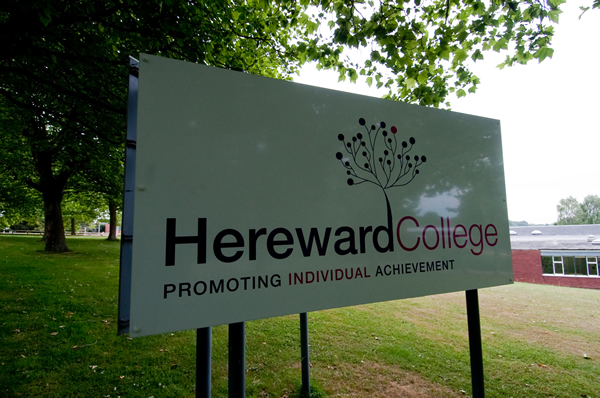Hereward College, Coventry, is a general Further Education college that provides day and residential places to disabled and non-disabled students, including those with cognitive, physical and sensory impairments. The focus of the college is to provide a 24 hour curriculum, in an ability-inclusive environment, that promoting independence and individual independence. This can include the use of assistive technologies – including environmental control technologies – in the living and learning environments and KNX intelligent building technology has been implemented as the platform for the environmental controls that help students to access the facilities and services that the college provides.

Hereward College always strives to provide the most accessible environment across the college. This objective, coupled with the Equality Act 2010 prompted the college to investigate the practicalities and cost of equipping some existing residential rooms with Environmental Control (EC) Units. These systems provide an easy, independent means of operating various appliances, from TVs and Hi FI Equipment to other items within a student’s immediate environment including: doors, windows, curtains/blinds, lighting, and room temperature.
Initially it was thought that EC technology manufactured and supplied by one of the private companies contracted to the National Health Service would be the best equipment for the task. However, Paul Doyle, ACCESS, Research and Development Manager at Hereward College had become aware of KNX technology when he worked for the NHS as an Environmental Control Engineer.
In 2013 Hereward College proposed an expansion to its residential accommodation blocks, including the intention of providing EC in students’ rooms. This was applied in the initial design phase of the new blocks and became an example of state of the art design incorporating many technological features to assist students with impairments.
An extra level of importance was added when it was announced that the college planned to relocate to a new building. Effectively Hereward was to be completely re-built in a six year project and as EC might be needed on a much wider basis, it was clear that EC technology merited serious consideration in terms of choice, intended purpose and cost. However, changes in funding Further Education eventually prevented the scheme from being realised in full.
Paul was charged with sourcing and installing equipment and felt that KNX technology could offer a level of flexibility and functionality that met students’ needs, especially bearing in mind the student population changed every three years and adaptations to meet differing student’s needs may be regularly required.
KNX could provide a high degree of remote control over the building’s electrically operated devices including heating, lighting and security. Furthermore with KNX, adding new functionality or reprogramming the existing system would be easy.
The KNX systems that have been installed allow physically able students to interact with a room in a standard manner; the room therefore presents itself as a standard study bedroom. KNX gives the college the ability to control an individual room’s heating, lighting, access and socket outlets via infrared enabled devices including communication aids and a range of environmental controls.
An example of the adaptability of KNX was demonstrated when there was a need to adapt the system to accommodate a student who experienced epileptic seizures. The care staff were concerned that if a seizure alert was triggered in the student’s room, they may not be able to enter if the door was locked. They would need to retrieve a key from the care office – a waste of potentially life critical time.
The settings of the KNX system were changed to capture a no volt output from the seizure monitor which then triggered the KNX system to release the room’s magnetic lock but not open the automatic door. This resulted in the care staff being sure they could gain access to the student’s room without him being exposed to unnecessary attention or pressure.
Hereward has also made use of KNX for control of smoke detectors, presence detectors, such as bed occupancy pressure mats with a KNX interface, and IR based solutions. Door and window contacts have a KNX interface and an IP Gateway with appropriate software to monitor the provision of sensor technology within the residences. Remote programming by technical staff has also been provided.
“The KNX system has proven to be very reliable and certainly cost effective when compared with NHS equipment suppliers,” says Paul Doyle. “KNX technology has been extremely reliable and we have experienced no failures in the years the systems have been in situ. KNX home automaton offers huge potential in enabling all people to stay in their home for longer as we get older. We only need to help people join up the dots.”












